Half of Patients Have Used Online Pharmacies But Under 10% Identified Safe Sites
Key Takeaways
- Over half of survey respondents use online pharmacies, but less than 10% can identify authorized ones, posing safety risks.
- Unauthorized online pharmacies contribute to the spread of substandard and falsified medicines, risking patient safety and public health.
Study authors explore online purchasing habits for prescription-only and OTC medications.
Despite over half of survey respondents reporting use of an online pharmacy, under 10% of participants knew how to identify safe online pharmacies void of any potential fraud or risk, according to a study published in the Scandinavian Journal of Primary Health Care.1
Researchers believe increasing this knowledge and targeting patients who prefer online pharmacies is crucial in avoiding risks and increasing the benefits of the convenient, direct-to-consumer (DTC) model for prescription and OTC medications.
“Unauthorized online pharmacies contribute to the spread of substandard and falsified (SF) medicines,” wrote the authors of the study.1 “SF medicines pose a risk to the individual patient, for example, by toxic effect, and to society by substandard effect and the risk of contributing to the spread of antimicrobial resistance. Hence, it is important for the public to be able to identify authorized pharmacies to purchase high-quality medicines online.”
With the sheer difficulty in regulating all online content and platforms, ensuring that patients avoid SF medicines is a tall task. As more and more proportions of the general public look to the internet for health advice and products, the DTC prescription and OTC model are growing too, potentially leading to substantial patient harms.
READ MORE:
One of US health care’s most well-known regulating bodies, the FDA is well aware of the potential dangers of online pharmacies and SF medicines. Many of these online entities claim to sell discounted drugs cheaper than notable competitors and oftentimes without a provider’s prescription. However, as the FDA states, online pharmacies promoting these kinds of sales are often unapproved and selling unsafe or counterfeit medications.2
“Self-diagnosis and self-medication are possible when using these platforms, and patients might seek drugs without a valid medical need or without a prescription,” wrote the authors of a study published in eClinical Medicine.3 “Absence of personalized advice and follow-up could lead to misuse of medication, dangerous drug interactions, or unexpected adverse effects.”
With this apparent increase in self-medication approaches among patients, as well as a lack of provider counseling for the use of these medications, researchers wanted to better understand the purchasing habits for prescription-only and OTC medications at online pharmacies. They attempted to understand these habits by examining prescription-only medication (POM) and OTC purchases among the population, comparing demographics between those buying medications online and those not, and exploring the external factors contributing to purchasing medications online.1
From 2022 to 2024, study researchers distributed a cross-sectional, digital questionnaire to the Swedish general population. With the study part of a project titled “Why do we choose the internet instead of the doctor next door?” it addressed the online purchases of POMs and OTCs, patients’ knowledge of online pharmacies, and general demographics and additional factors affecting patients’ purchasing patterns.
A total of 6006 respondents (average age, 49 years; 50% men) between the ages of 18 and 79 years completed the questionnaire.
Across the study population, over half of participants (52%) bought medications online in the past year. Furthermore, a total of 91% were not aware of the proper logos denoting an authorized online pharmacy.
For the common demographics appearing among online medication purchasers, those buying OTC medications were significantly younger than participants purchasing POMs. Women and patients with higher levels of education were also reported as more likely to use an online pharmacy.
“Overall, the majority stated that external factors did not influence their buying patterns. Some prefer online pharmacies, others do not,” they continued.1 “As expressed by the respondents in this study, if you have a chronic condition that makes it hard to visit a community pharmacy or if you live in a rural area, online pharmacies might provide advantages. On the other hand, if you live near a community pharmacy and/or if you feel insecure about online purchases, community pharmacies are perhaps a better option.”
Indeed, the current observations regarding online pharmacies and the digital landscape’s role in health care are quite novel. As more and more health care services and resources reach the internet, both patients and providers will need to do their due diligence to ensure safety and efficacy. As researchers explore new ways to understand the digital revolution within health care, providers are encouraged to promote the importance of sourcing medications from authorized outlets.
“If we use the advantages and avoid the risks with online purchases of medicines, resources in health care can be saved,” concluded the authors.1
READ MORE:
Are you ready to elevate your pharmacy practice? Sign up today for our
REFERENCES
1. Persson A, Troein M, Jakobsson U, et al. Using the advantages and avoiding the risks—a public survey about the challenges of online purchases of medicines. Scand J Prim Health Care. Published online November 15, 2025:1-13. https://doi.org/10.1080/02813432.2025.2584902
2. How to buy medicines safely from an online pharmacy. FDA. January 2, 2025. Accessed November 18, 2025. https://www.fda.gov/consumers/consumer-updates/how-buy-medicines-safely-online-pharmacy
3. Online pharmacies: a double-edged sword. EClinicalMedicine. 2025 Feb 24;80:103133. doi: 10.1016/j.eclinm.2025.103133.
Newsletter
Pharmacy practice is always changing. Stay ahead of the curve with the Drug Topics newsletter and get the latest drug information, industry trends, and patient care tips.













































































































































